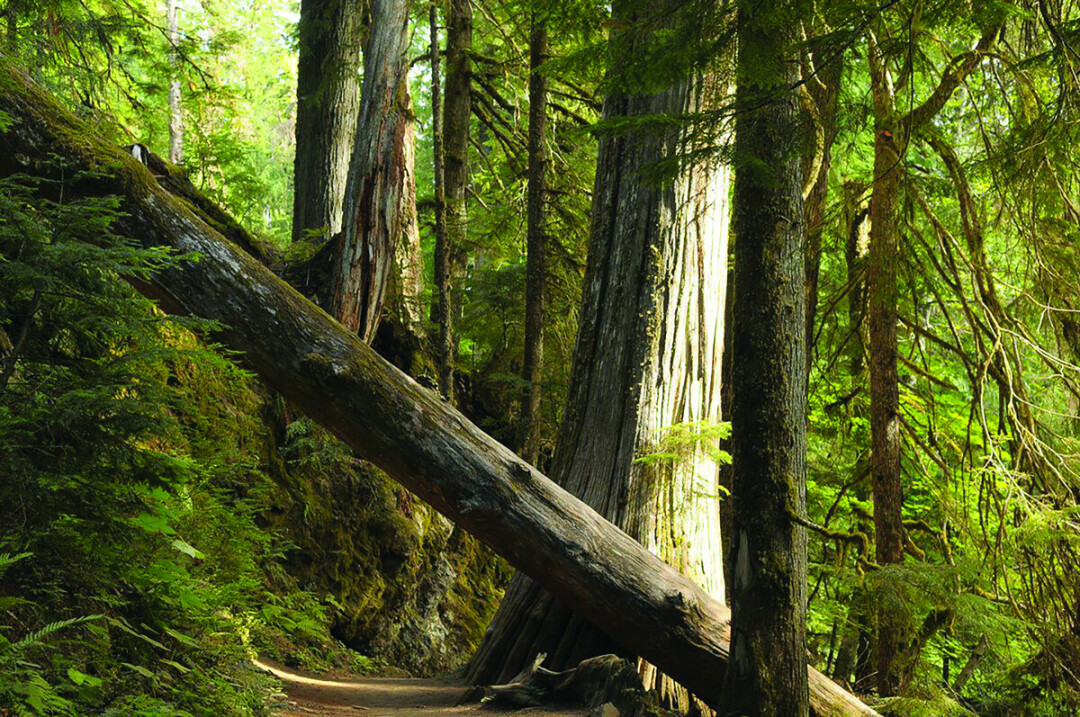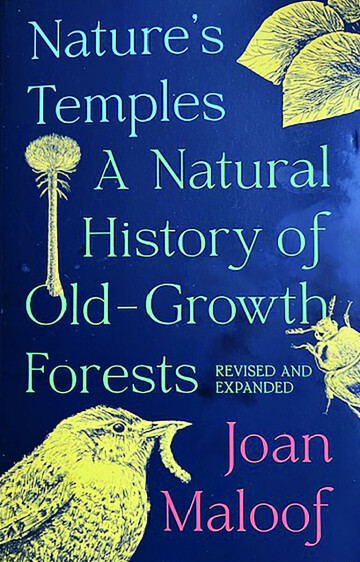Old Growth Forests A Montana Heritage
Monday Apr. 1st, 2024

Author Joan Maloof is fighting to save some of our last, best places — America’s old-growth forests. She will give a free talk in Bozeman Thursday, April 11, at the Museum of the Rockies on ‘Old-growth Forests in Montana – Where Are They, Why Are They Important, What Can You Do To Save Them.’
“Ancient forests provide great benefits to people and to the planet, and yet they are in danger,” says Maloof, founder of the nonprofit Old-Growth Forest Network. “They are our best solution right now to climate change. The older a forest gets, the more carbon it’s sequestering.”
Compared to forests that have been ‘managed’ (logged, clearcut or thinned, regrown or replanted with new trees for commercial logging), old-growth forests provide more habitat for endangered species. Majestic old-growth forests are rated as more beautiful and inspirational by people who walk through them. Visitors also experience health benefits such as reduced stress.
Perhaps their greatest benefit is combatting global warming, because old-growth forests remove more carbon dioxide from the atmosphere. Scientific studies in the past two decades have found that as old trees get older they keep growing and expanding, rather than slowing down, as once believed. Their canopies capture vast amounts of greenhouse gases and pollutants from the air, storing carbon in trunks, branches and roots. “Forests are removing about one-third of the carbon dioxide we release through fossil fuel burning,” says Maloof. “Nothing is doing more, and they’re doing it for free.”
Yet, after centuries of logging and clearing land, very few untouched old-growth forests remain in America. Only about five percent of forests in the western states remain unlogged, and in the East only one percent are original, unlogged forests, as Maloof writes in her most recent book, Nature’s Temples: A Natural History of Old-Growth Forests. Old-growth forests, like the giant sequoias of California, have many layers of undisturbed vegetation, and support complex ecosystems of plants, fungi, mosses, lichens and wildlife.
The importance of old-growth forests started to dawn on Maloof when she published her first book, Teaching the Trees: Lessons from the Forest as an associate professor of biology and environmental studies at Salisbury University in Maryland. Excited about the chapter on old-growth forests, readers kept asking her where they could find such places. Just walking through an old-growth forest lowers blood pressure and increases feelings of well-being, she notes; perhaps because of all the oxygen that trees release. “It’s a healing experience to be in a forest,” she says. “I speculated maybe it’s something in the air that makes you feel happy and healthy.”
For her second book, Maloof began visiting old-growth forests in the eastern states to write about them. As she traveled, she realized how special these remnants of ancient forests were. And she realized no group was trying to preserve them. After seven years, she retired from teaching so she could tackle new roles: author and activist, non-profit director, and fundraiser.
She fought to save patches of old forest near her home, meeting both successes and defeats. She founded the Old-Growth Forest Network, and started looking for volunteers who could save old-growth forests near their own homes. The goal of the Old-Growth Network is to find a forest in every county that people can easily visit near their own homes, and work to protect those. So far the network includes 233 identified forests in 34 states, but so far, none in Montana.
“I feel I’ve been able to reach more people in this second career of mine,” says Maloof, now 67, who has been interviewed by publications like The New York Times and The Washington Post. “It’s more exciting when you can actually save a forest, when it was going to be cut down and now it’s… protected. You leave a real legacy.”
On Earth Day 2022, Maloof was thrilled when President Biden signed an executive order directing federal agencies to define old-growth forests, and inventory how many still exist on federal lands. “Just to hear a president of the U.S have the words ‘old-growth forest’ come out of their mouth was exciting,” she says, adding, “it will help educate people.” On Earth Day 2023, the administration ordered federal agencies to come up with ideas and plans to protect old-growth stands. Last December, the administration moved to preserve old-growth groves, and limit logging. The Forest Service was directed to amend the management plans, which guide logging and uses of its forests nationwide, to add protections for old-growth stands. In what was seen as a compromise, logging was still to be allowed in ‘mature’ forests that haven’t yet reached old-growth status.
The inventory found more stands of mature and old-growth forests than researchers had expected. The Forest Services and Bureau of Land Management together oversee more than 50,000 square miles of old-growth forests and about 125,000 square miles of mature forests, the Associated Press reported. Most are in western states like Montana and Idaho, California and Oregon, but they are also found in New England, the Great Lakes area and southern states like Kentucky and West Virginia.
Environmental groups like Trout Unlimited hailed the administration’s proposal as “the first time the Forest Service has said its national policy will be to protect old growth.” The proposed protections won’t be final until January 2025, however, when a new administration could take charge and reverse the move. Maloof says some 200 scientists have written the administration urging that a moratorium on logging old forests on federal lands be put in place before, rather than after the election.
While environmentalists find the proposed old-growth protections exciting, timber industry representatives argue that many logging projects are necessary to reduce the risk of devastating wildfires to local communities. Some industry groups contend that only logging, controlled burns and actively managing “unhealthy and overstocked” federal forests can “reduce massive greenhouse gas emissions from severe wildfires.”
Maloof points to studies that have found that dense, old-growth forests may actually resist fires better than thinned forests. When forests are thinned, she says, they become drier and can burn more quickly, and the winds that drive wildfires move through faster. In Oregon, researchers who studied the 2013 Douglas Complex wildfires that raged through a checkerboard pattern of public forests and ‘managed’ private lands, found that the blazes burned with greater severity on the logged and replanted timber industry lands.
“I do believe we can log some places and have wood products,” Maloof says. “I’m doing a renovation on my house; I love wood. But we should also have some places that are off limits. When a forest is left alone, the trees and entire ecosystem of living things grow. People love to visit such places. So many of us feel like it’s a beautiful experience, spiritually uplifting,” she says. “Those are the places [where] we want to recreate. These are the places we want to bring our children … so they will want to preserve it. We can protect all the forests we want in our generation, but if we don’t have the next generation after us, it will all disappear.”
That’s why the Old-Growth Forest Network is looking for forests that are easy for people to visit (not requiring a 10-mile wilderness hike), and is looking for volunteers to protect their nearby old forests. “We’re looking for really accessible places,” says Maloof, “places where grandparents can take their grandchildren.”
In this area, Wild Montana has listed the Grotto Falls Trail above Hyalite Reservoir as one place where people can easily visit old-growth forests. Maloof’s mission to spread the word on old-growth forests has taken her all over the United States. In places, it has earned her the nickname of “unrepentant tree-hugger.” She doesn’t mind. “I love it,” she says. “I certainly am.”
Maloof’s talk at the Museum of the Rockies begins at 7 p.m., following a 6 p.m. reception with complimentary food and a signing of her latest book. The event is sponsored by Gallatin Valley Earth Day, which has chosen as this year’s theme “Under One Canopy –Celebrating Trees and Forests.” The presentation can also be live-streamed (see www.gallatinvalleyearthday.org).
Gail Schontzler worked as a reporter and editor for the Bozeman Daily Chronicle for 37 years before retiring in 2020.
| Tweet |